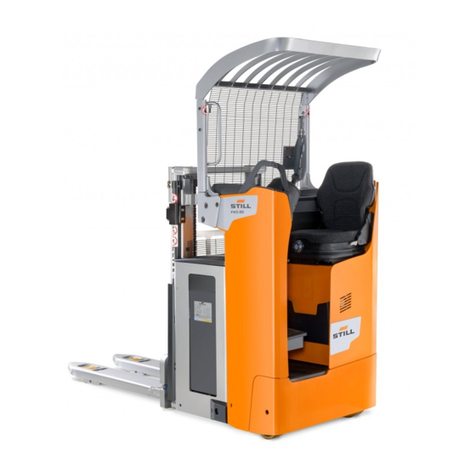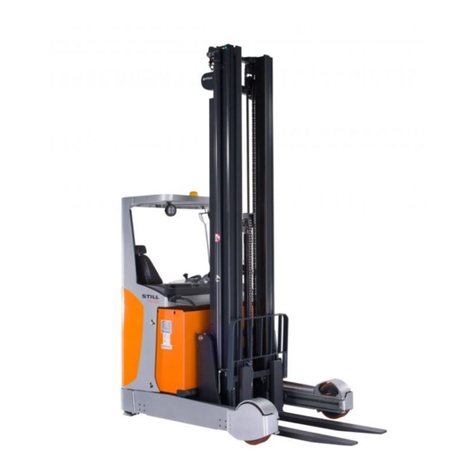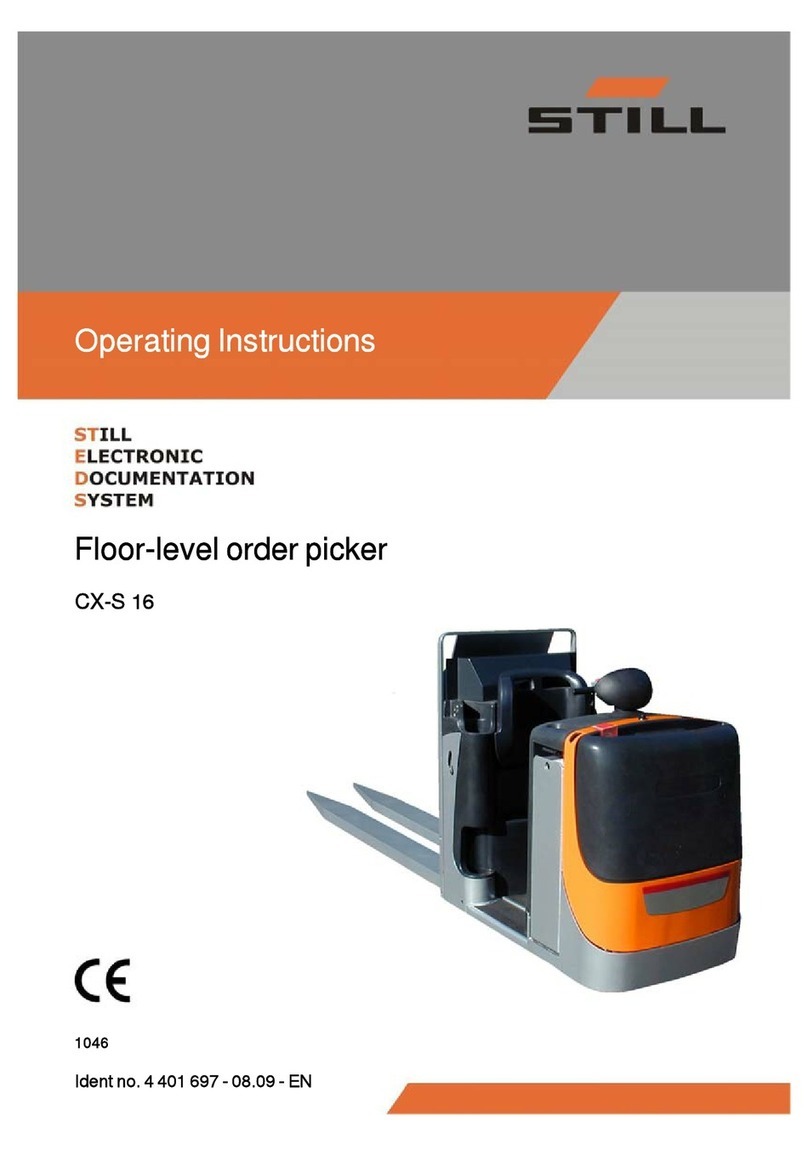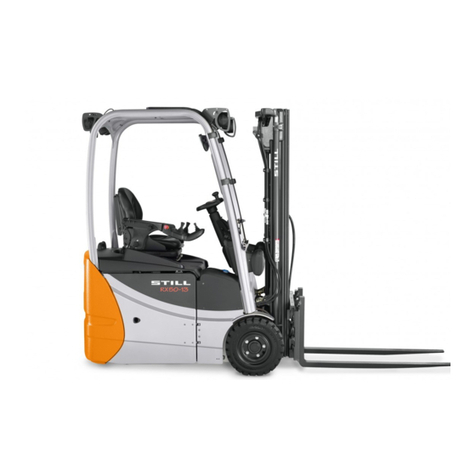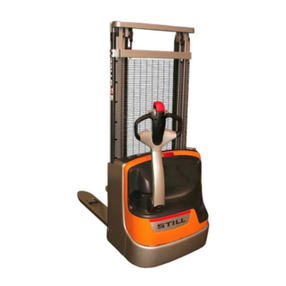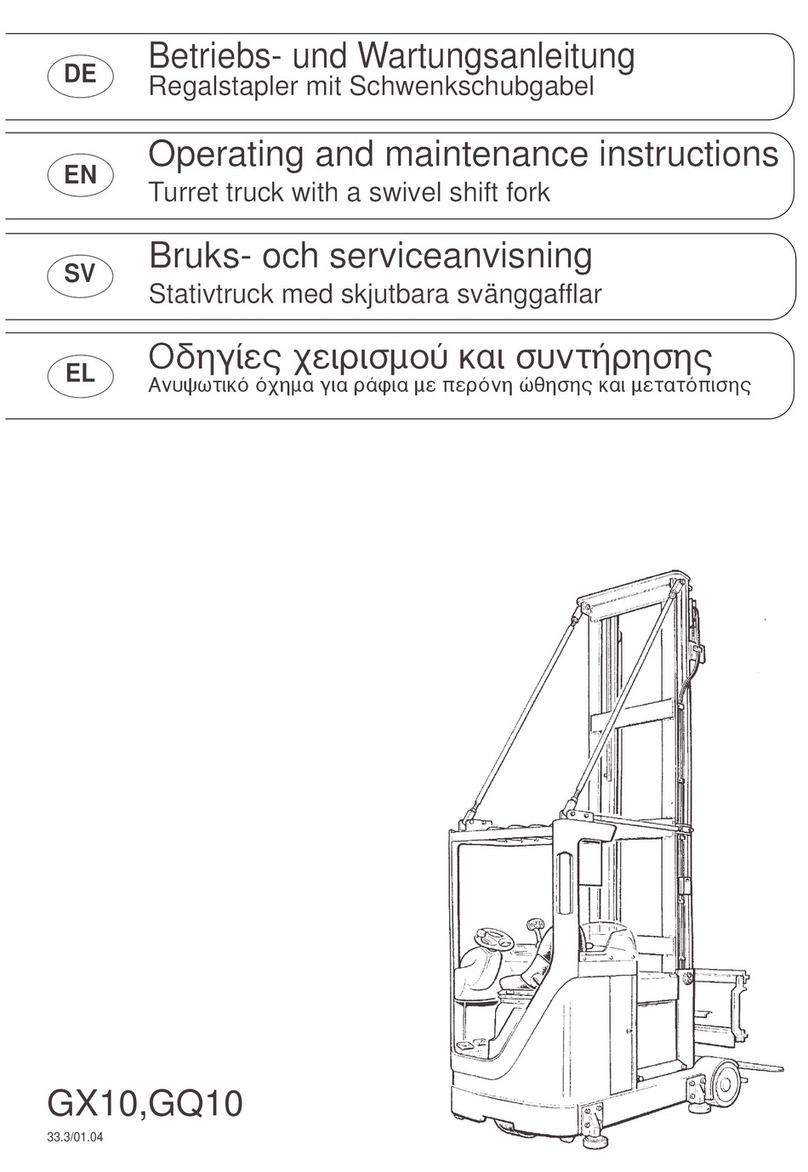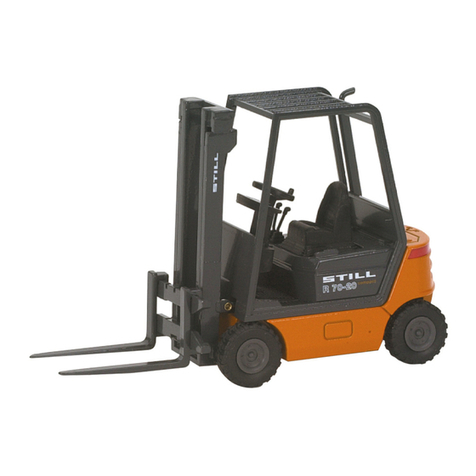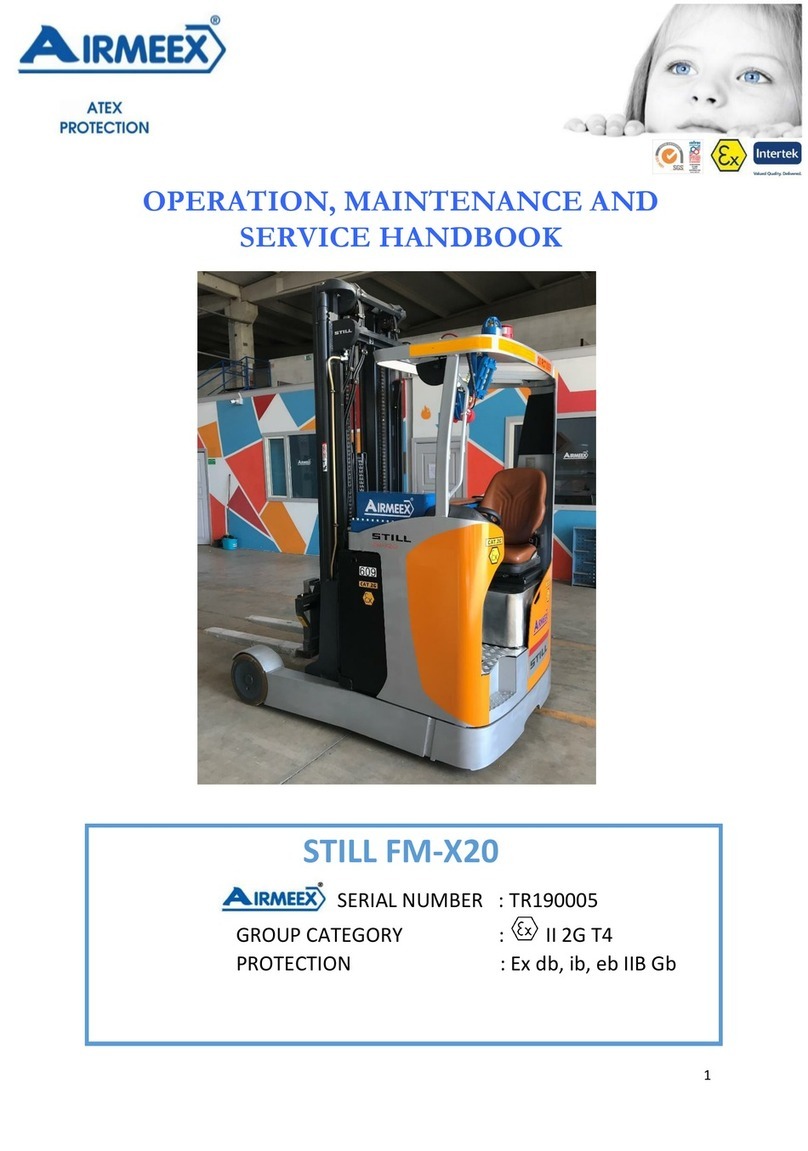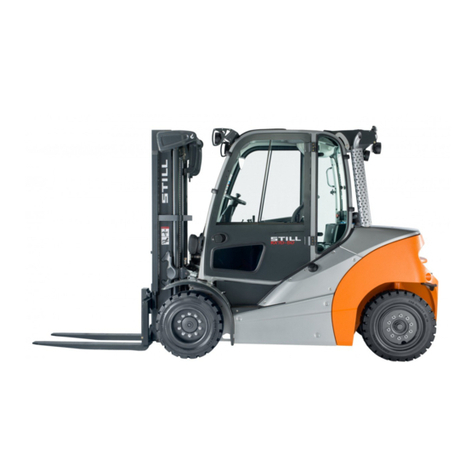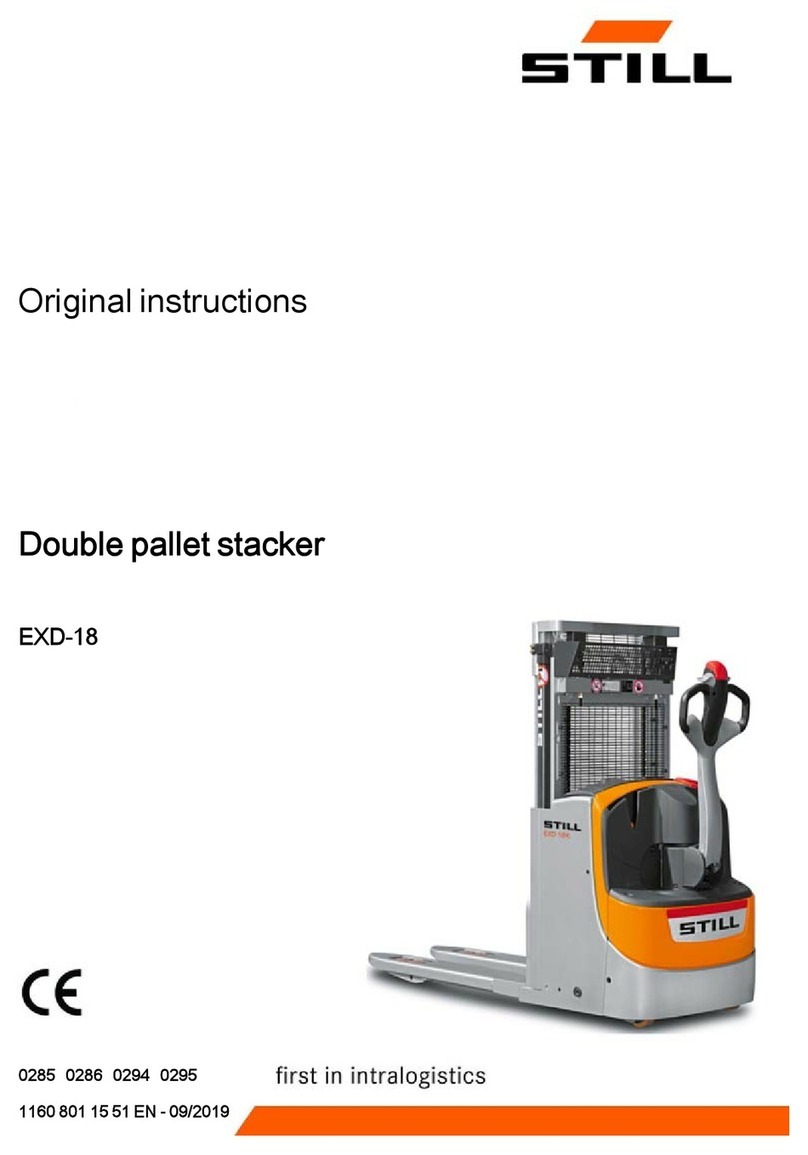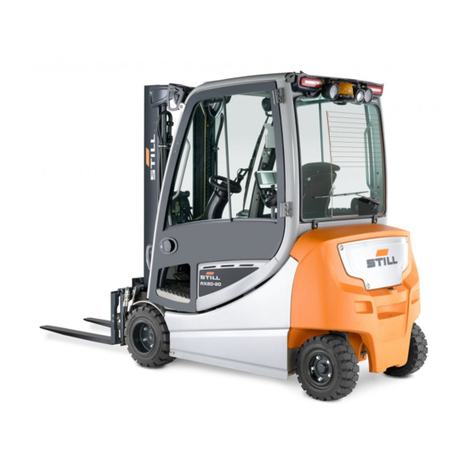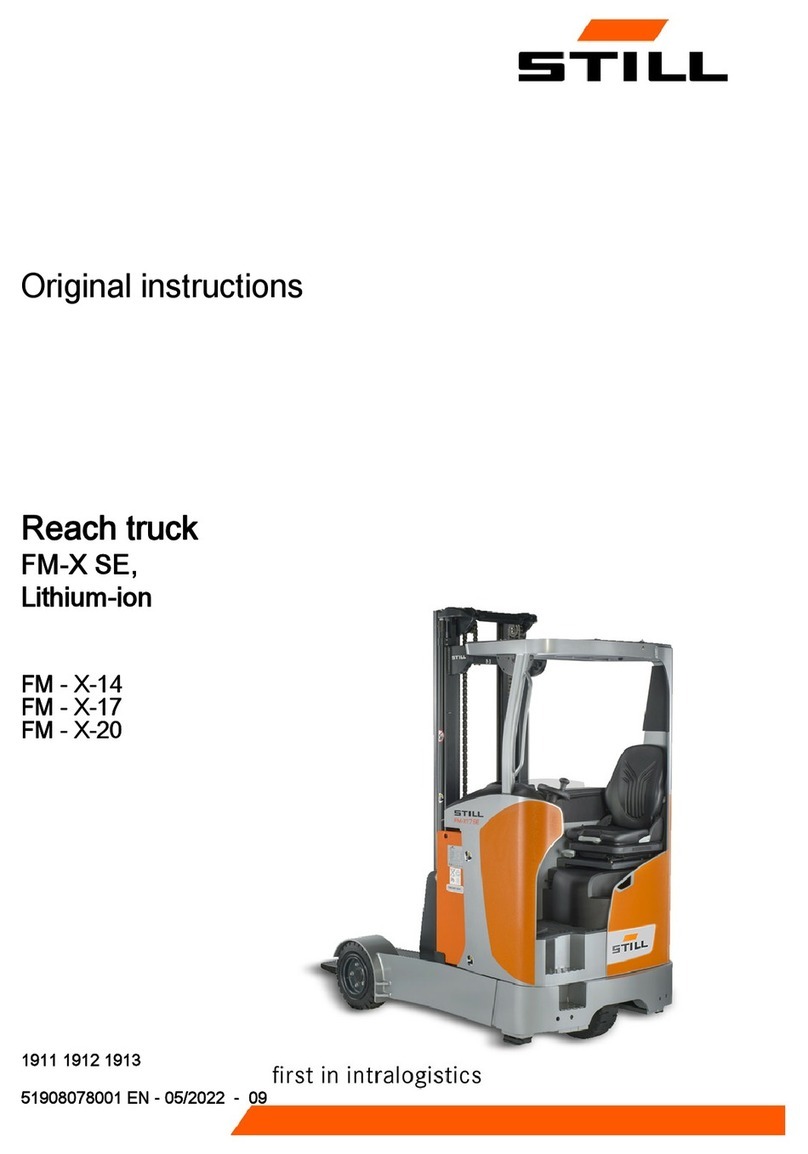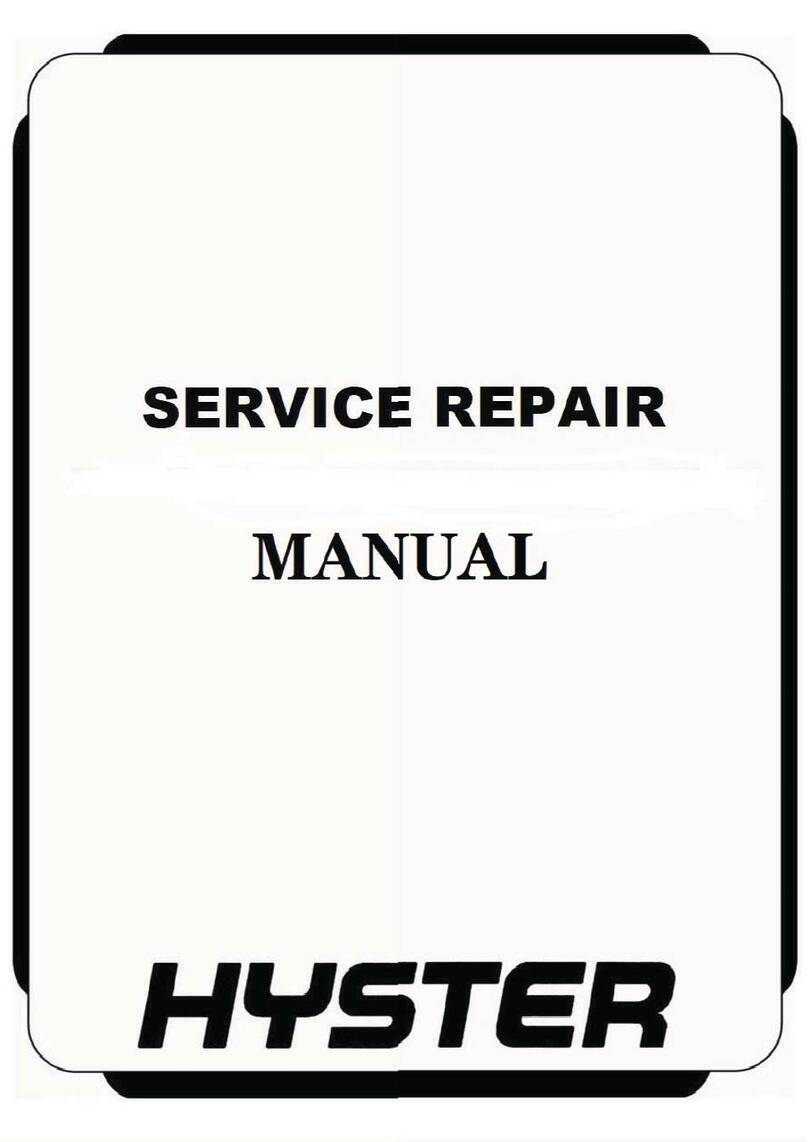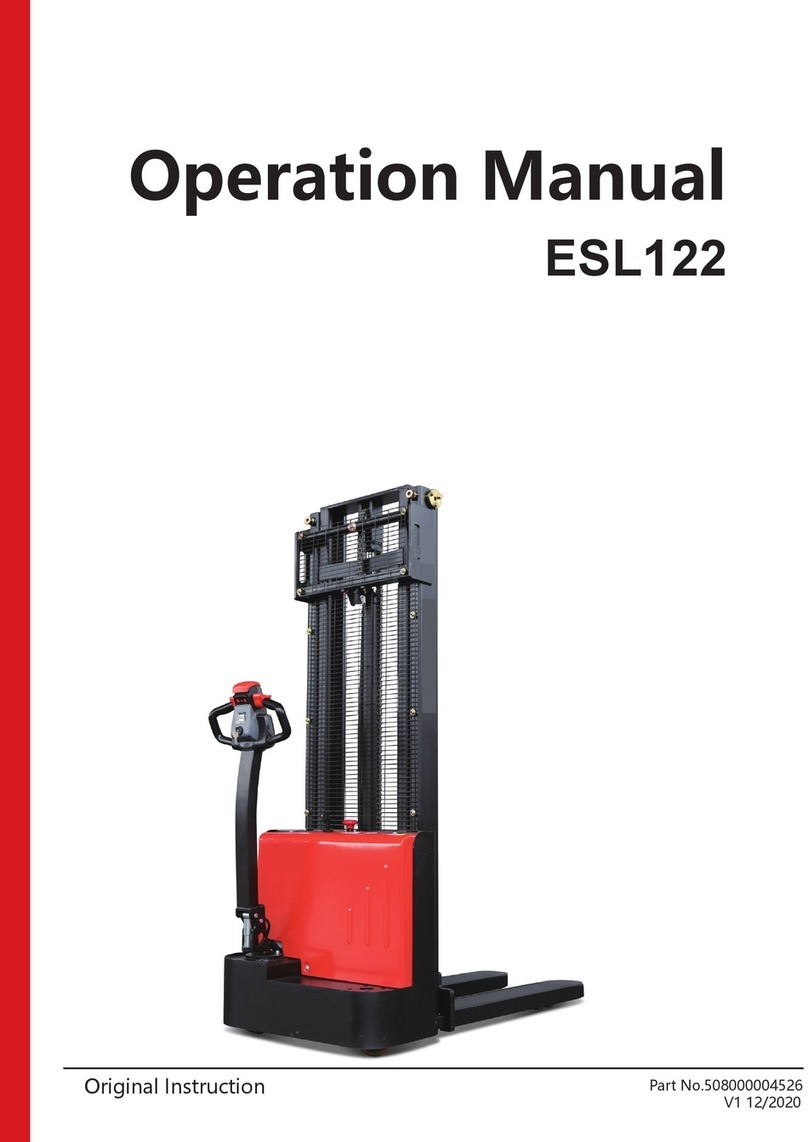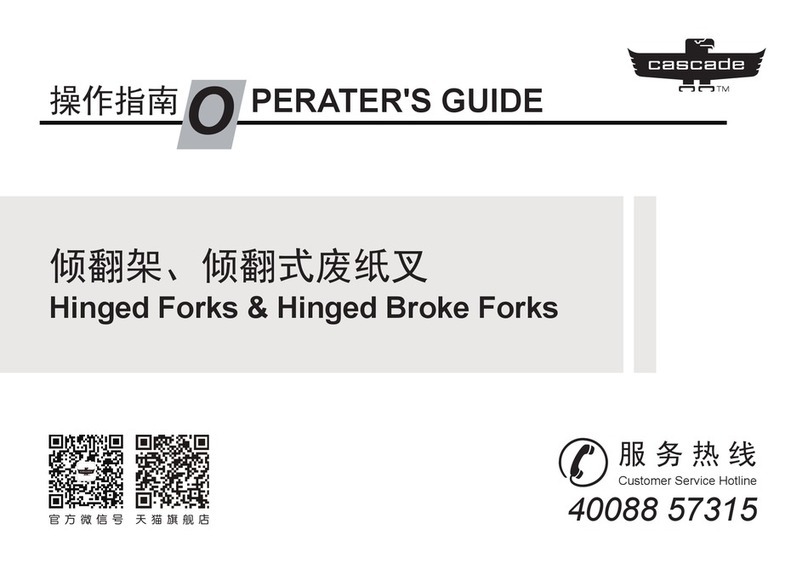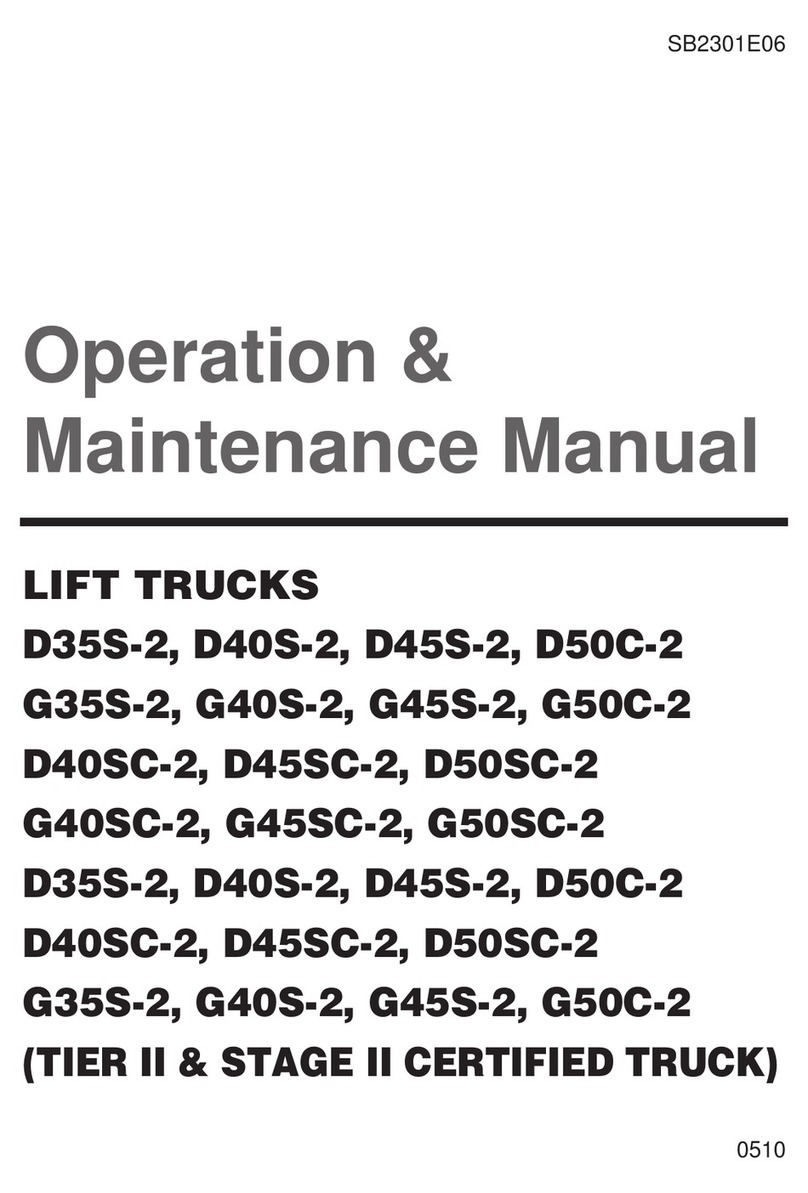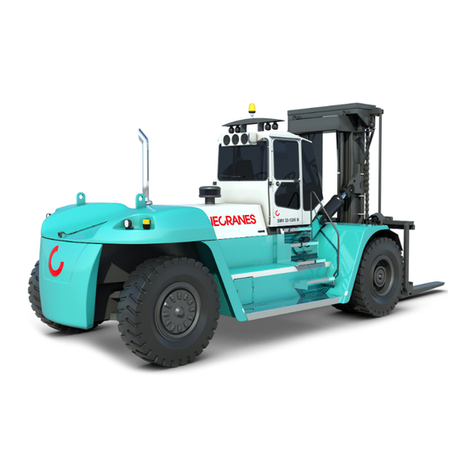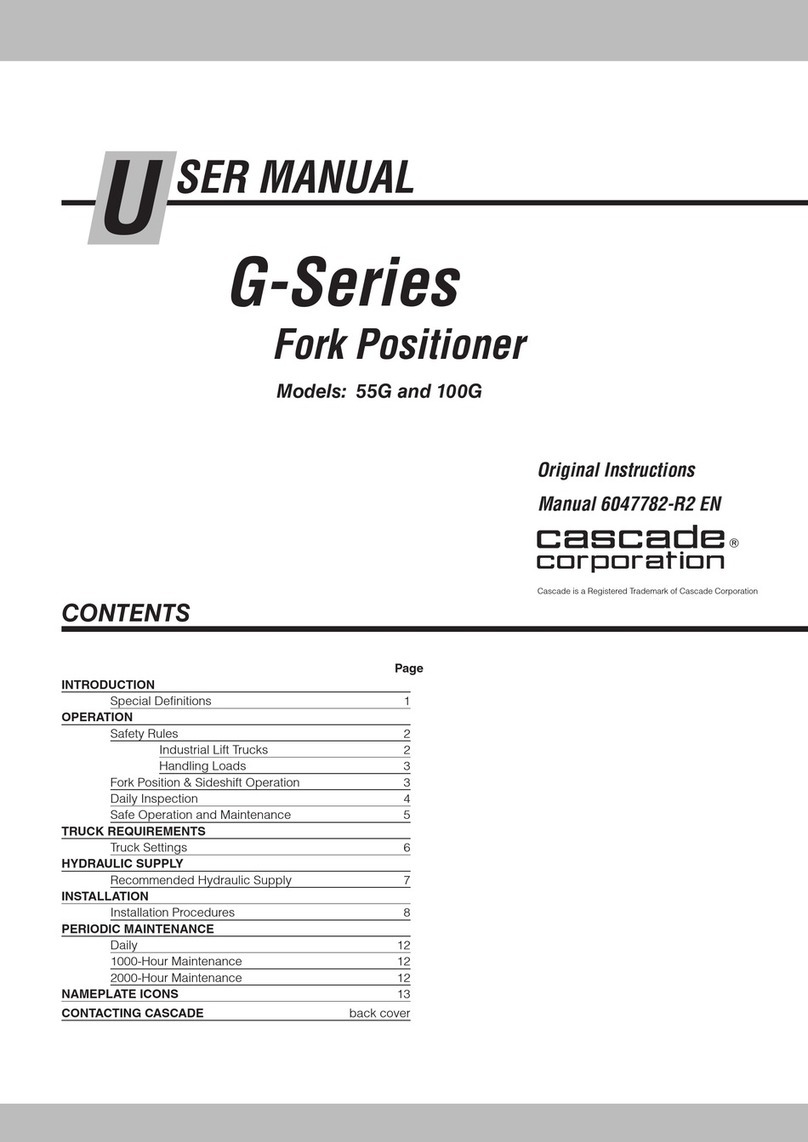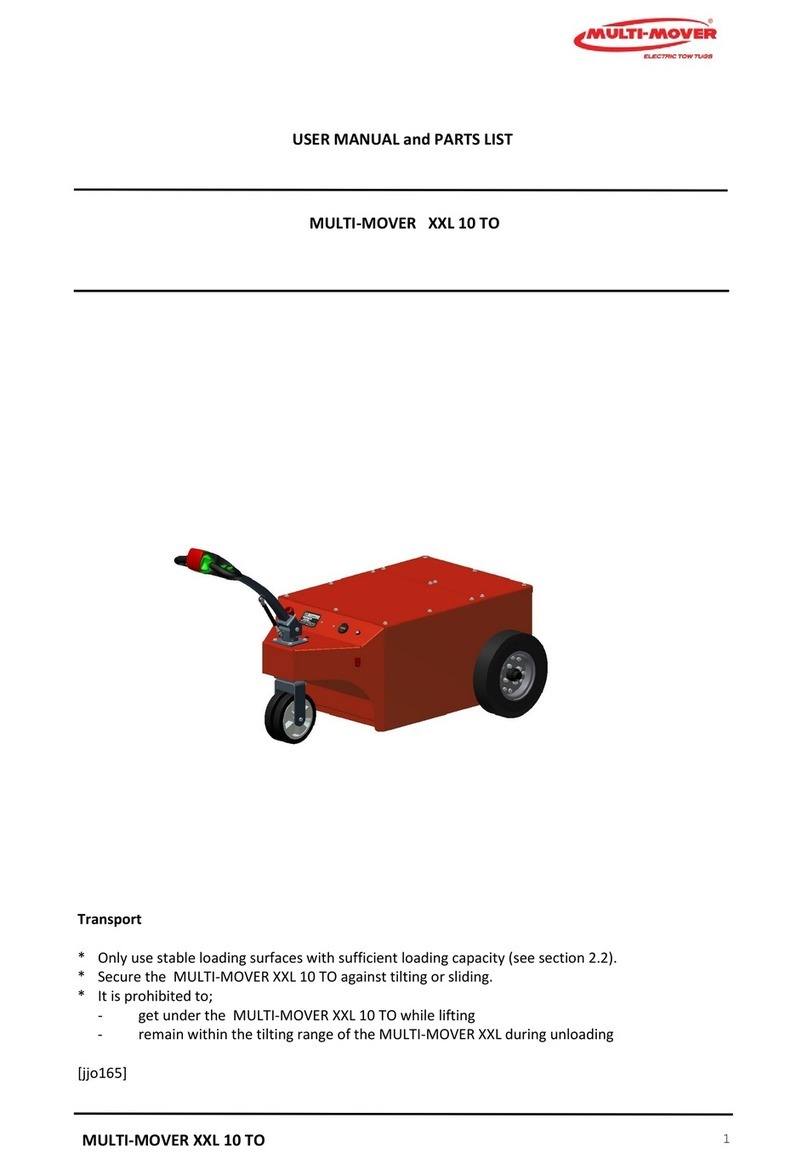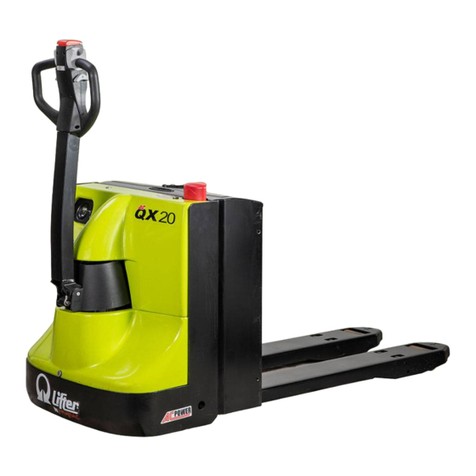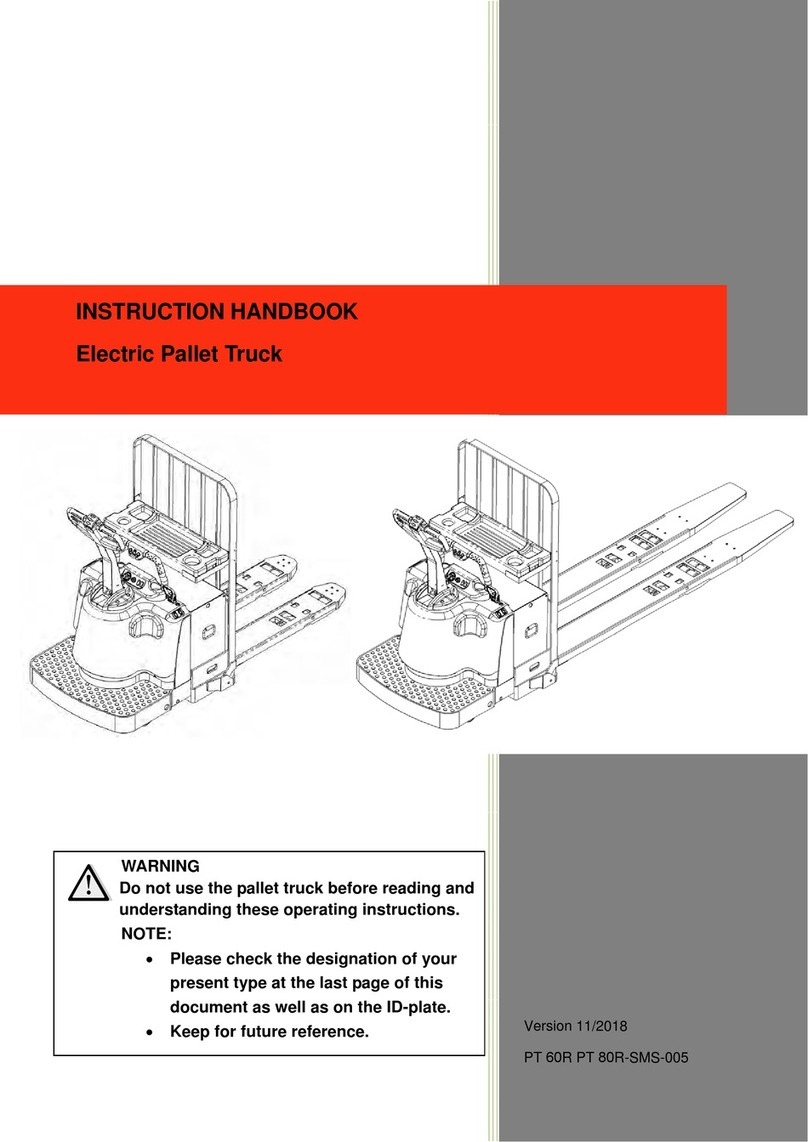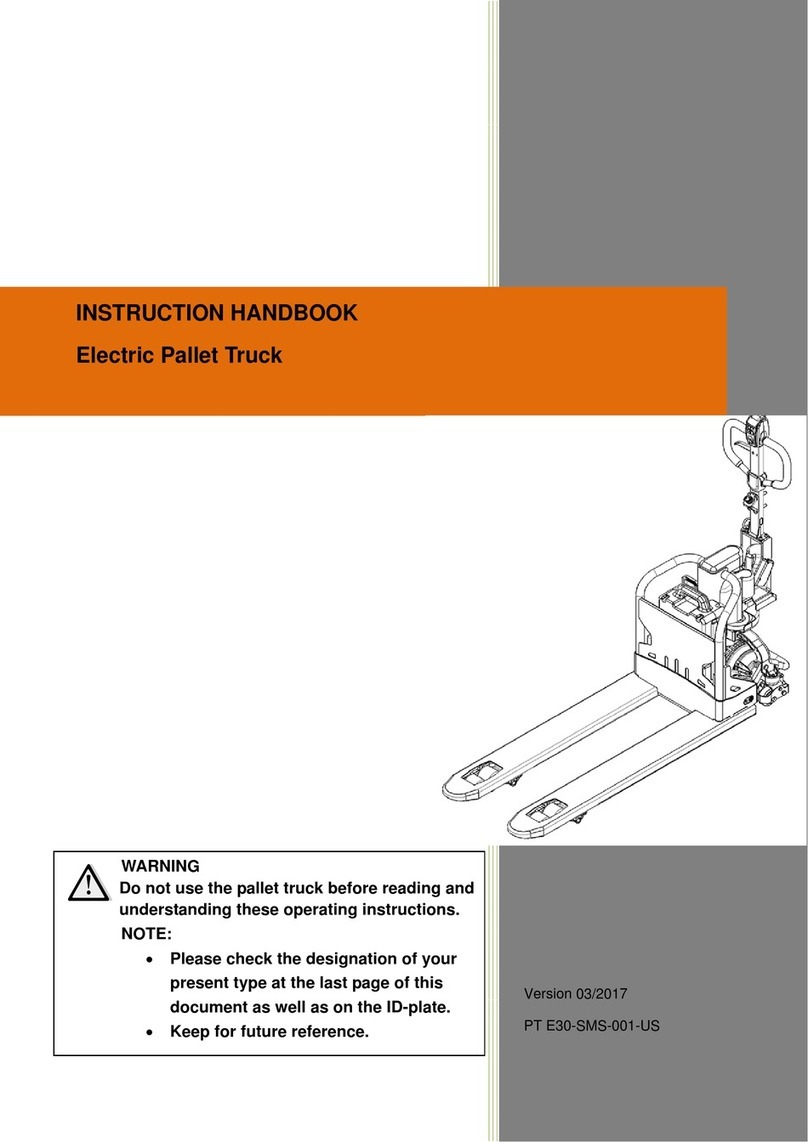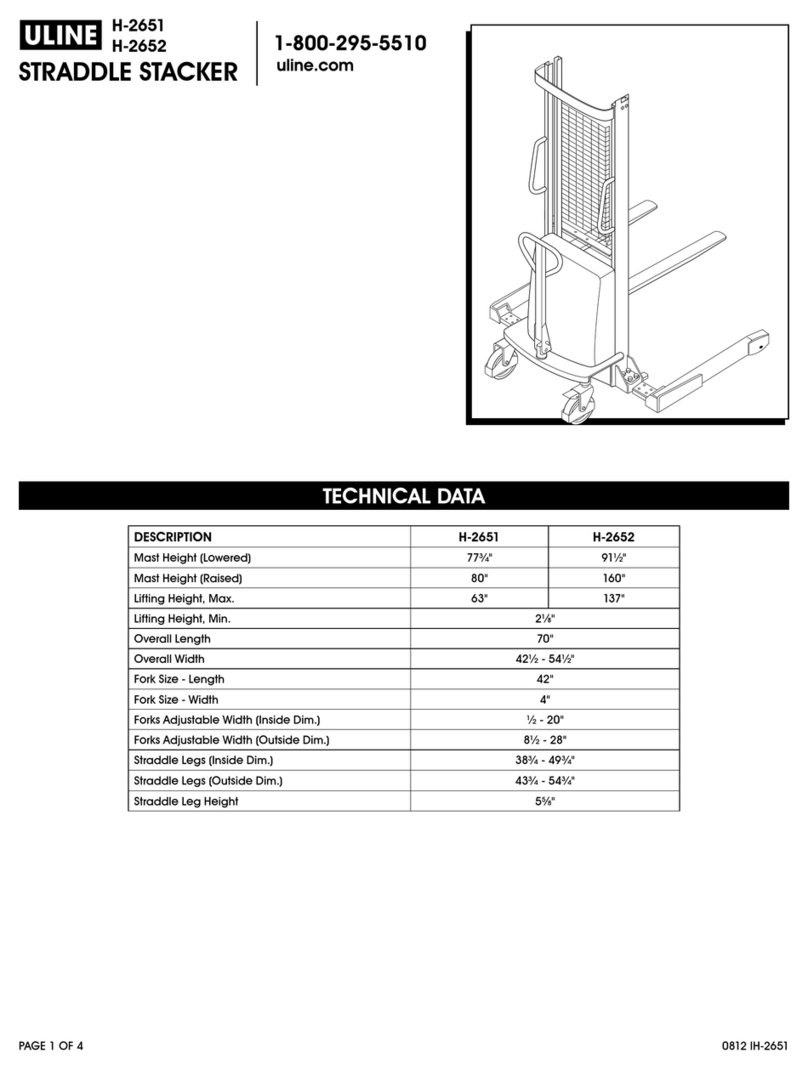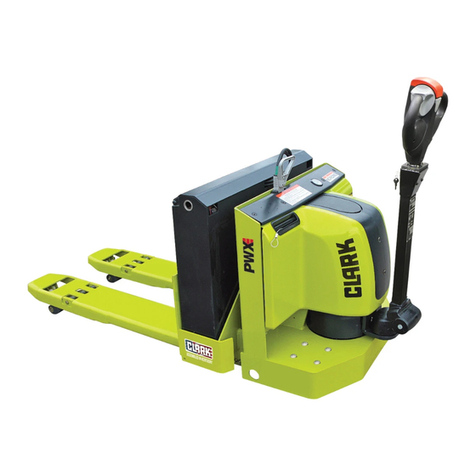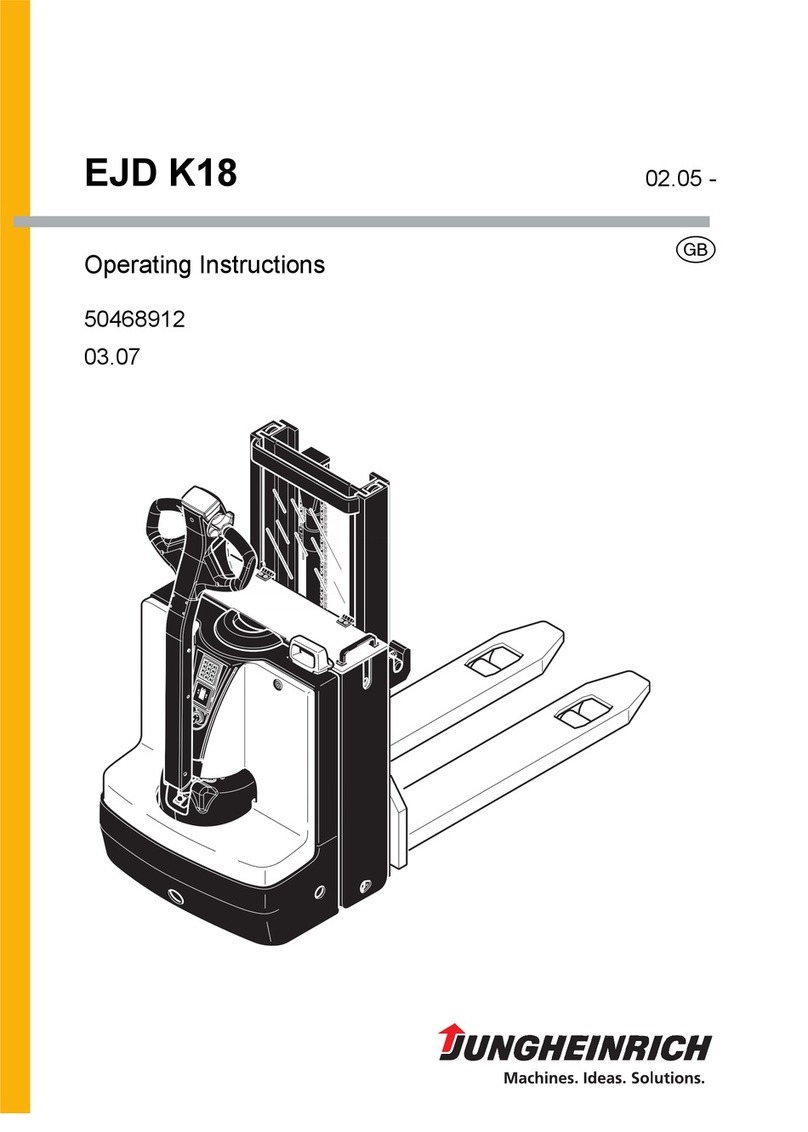
1Introduction
Electric pallet stacker
Electric pallet stacker
Electric counterweight pallet stacker types
EXG 10, EXG 12 and EXG 16 are designed for
stacking.
Theycanalsobeusedtotransportpalletsofa
maximum weight 1000 kg (EXG 10), 1200 kg
(EXG 12) and 1600 kg (EXG 16) inside stores,
warehouses and factories.
EXG capacity
EXG 10: maximum of 1000 kg on the fork arms
EXG 12: maximum of 1200 kg on the fork arms
EXG 16: maximum of 1600 kg on the fork arms
Configuration
EXG trucks are configured to pedestrian
version as follows:
–unladen: 6 km/h in forward travel and 5
km/h in reverse travel
–laden: 6 km/h in forward travel and 5 km/h
in the direction of the forks
These safe, robust, comfortable and ex-
tremely stable trucks offer excellent perfor-
mance due to their construction which in-
cludes:
– a fixed central chassis with the mechanical,
electrical and hydraulic units required to
operate the truck,
– a fixed fork carriage at the rear of the
battery.
Drive system
The drive is provided by a 3 kW asynchronous
traction motor.
The drive wheel is driven by a transmission
gear with a first stage reduction and a spur and
pinion final drive.
The power is supplied by a 3PzS, 4PzS and
5PzS capacity lead-acid battery.
There are several battery types available:
– Vertical access
– Side access
The power supply to the traction motor is
controlled by an electronic control module
which provides complete control of the speed,
acceleration and braking.
Steering
The electric steering offers driving precision
and reduced effort during manoeuvres.
Steering is controlled by a tiller designed for
pedestrian driving.
The drive unit is mounted on a turntable;
steering lock is provided by an electric geared
motor which positions the turntable.
The steering motor is controlled by an elec-
tronic module that receives information from
the tiller and the wheel angle position.
Lifting system
The pallet stackers are fitted with pump unit
having a 3 kW motor and a single pump.
Braking
EXG models are fitted with two types of
brakes:
–an electromagnetic safety brake that also
acts as a parking brake.
The parking brake is applied automatically in
the following situations:
• tiller released
• truck stationary with drive direction switch
in neutral
• power off.
The safety brake is applied automatically in
the event of a fault in the traction or steering
control systems.
–an electric counter-current brake which is
applied automatically when the accelerator
is released and when the direction of travel
is reversed.
21
170 801 15 09 [EN]
